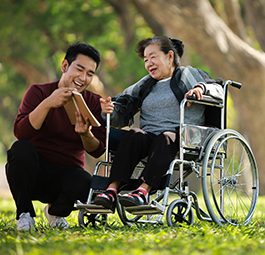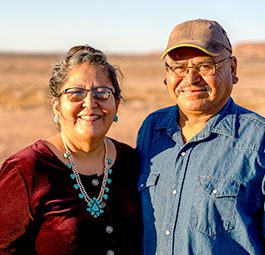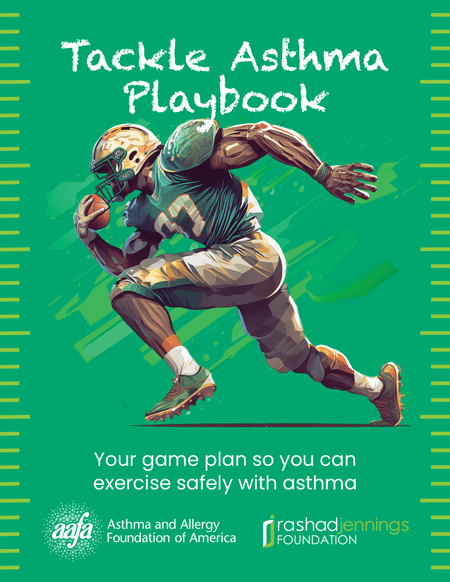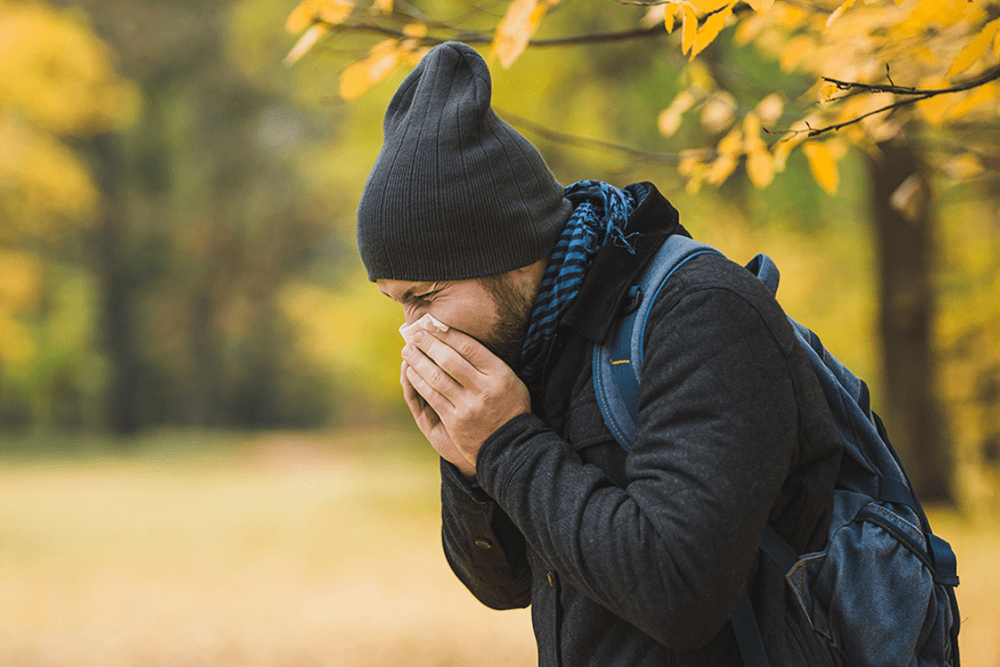Asthma
Exercise-Induced Bronchoconstriction (Asthma)
Everyone needs to exercise, even people with asthma! A strong, healthy body is one of your best defenses against disease. But some people have asthma episodes during exercise. This is called exercise-induced bronchoconstriction [BRAHN-koh-kahn-STRIK-shun]. By taking steps to control your asthma, you should be able to exercise free of symptoms.
What Is Exercise-Induced Bronchoconstriction?
If you have asthma symptoms during exercise or physical activity, you may have exercise-induced bronchoconstriction (EIB). In the past, it was called exercise-induced asthma. But that name wrongly suggests that exercise causes asthma.
Anyone can have shortness of breath during exercise. If you have EIB, your airways become tight, narrowed, and inflamed during physical activity. This happens because you breathe dry air during exercise, causing you to lose heat, water, or both from your airways. Dryness of the air, rather than the temperature, seems to be the most likely trigger.
As many as 90% of all people who have asthma also have EIB.1 You can also have EIB even if you do not have asthma.
What Are the Symptoms of Exercise-Induced Bronchoconstriction?
Symptoms of EIB include:
- Cough
- Shortness of breath
- Wheeze (a whistling sound when you breathe)
- Chest tightness or pain
- Fatigue during exercise
- Decreased endurance or inability to complete exercise activities
Coughing is the most common symptom of EIB and may be the only symptom you have. Symptoms can range from mild to severe.
This is the typical timeline for EIB symptoms:2
- Start within 10 to 15 minutes after 5 to 8 minutes of high-intensity aerobic activity
- Resolve within 30 minutes to 1.5 hours after stopping exercise
- Symptoms usually do not return if you continue to exercise within 1 to 3 hours
Some people will have a second wave (“late-phase”) of symptoms 4 to 12 hours after stopping exercise. Late-phase symptoms are often less severe and can take up to 24 hours to resolve.
What Causes Exercise-Induced Bronchoconstriction?
When you exercise, your body demands more oxygen so you breathe faster and deeper. You usually breathe in through your mouth during exercise. Air that you breathe in from your mouth is dryer and cooler than when you breathe through your nose. It would be ideal to breathe both through the nose and mouth.
The dry and/or cold air is the main asthma trigger for airway narrowing (bronchoconstriction) and inflammation seen in EIB. Exercise that exposes you to cold, dry air is more likely to cause asthma symptoms than exercise involving warm, humid air. Some examples of cold weather exercise that may cause asthma symptoms include running outside in the winter months, ice skating, and playing hockey.
Other triggers that can make EIB symptoms worse include:
- Air pollution
- High pollen counts
- Exposure to other irritants, such as smoke and strong fumes (such as chlorine from a swimming pool, perfumes)
- A recent viral upper respiratory infection (such as a cold or flu) or asthma episode
How Do Doctors Diagnose Exercise-Induced Bronchoconstriction ?
It is important to know the difference between being out of shape and having EIB. Your doctor will ask you about your medical history, family history, and may perform a series of tests to diagnose EIB. Your doctor may measure your breathing before, during, and after exercise to test your lung function. This can be done by having you run on a treadmill or ride an exercise bike. If you have EIB, your doctor will help you create a plan so you can take steps to prevent asthma symptoms during exercise. Your doctor will also tell you what to do if you have an asthma flare-up or attack.
Other conditions your doctor will need to rule out include:
- Vocal cord dysfunction
- Abnormal airways (such as laryngomalacia or a soft, floppy airway)
- Exercise-induced anaphylaxis
- Poor cardiovascular (heart) conditioning, obesity
- Reflux (gastroesophageal reflux disease)
- Psychological factors such as anxiety associated hyperventilation
- Other lung diseases
With a diagnosis and treatment plan, you can enjoy all types of physical activity.
What Types of Medicines Treat or Prevent Exercise-Induced Bronchoconstriction?
Good general health, physical conditioning, and medical treatment can prevent EIB in most people. If you have EIB, your doctor will prescribe asthma medicine for you to take to help you manage your symptoms. Your doctor may prescribe a quick-relief medicine (usually in inhaler form). You would take it 15 to 20 minutes before activity or exercise. An example of a quick-relief medicine is albuterol. It works by relaxing the small muscles that squeeze the airways. (These medicines “relieve the squeeze.”)
Your doctor may also prescribe a controller medicine, as well as other asthma medicines, which aim to control and prevent specific asthma symptoms.
Together, you can find the best asthma treatment for you based on your medical history and the type of activity you do.
If you continue to have frequent symptoms with usual activity or exercise, talk with your doctor. Your doctor may adjust your asthma treatment plan to help your symptoms. The major goal is to continue exercising regularly and not avoid it.
Remember, you should be able to take part in activities, sports, and exercise without experiencing symptoms! Do not let EIB keep you from leading an active life or from achieving your athletic dreams.
What Types of Sports Are Best for People with Exercise-Induced Bronchoconstriction?
Activities most likely to trigger EIB:2
- Sports or activities in cold/dry weather (ice hockey, skiing, ice skating, snowboarding)
- Sports or activities that need constant activity (long distance running, cycling, triathlons)
Activities least likely to trigger EIB:
- Sports or activities that use short bursts of exercise (fencing, weightlifting, boxing, golf, gymnastics)
- Walking or leisure biking
It is important to talk with your health care provider before beginning any exercise program. Do proper warm-up exercises such as stretching or a light jog. Pace yourself. With effective management, people with EIB can perform and excel in a variety of sports. Many Olympic athletes and professional athletes with EIB excel in their sports, when it is appropriately managed.
Can Exercise Help Asthma?
Exercise benefits your entire body. While exercise cannot cure your asthma, some of its health benefits can help keep your asthma well-controlled.
Some health benefits of exercise that can help your asthma include:
- Improved overall lung function
- Weight loss/maintenance – Weight can affect lung volume, blood flow to the airways, and how you respond to medicine
- Stress reduction – Stress and emotions can trigger asthma symptoms

A strong, healthy body is one of your best defenses against disease. Many people with asthma have symptoms during exercise. With proper prevention and management, you should be able to exercise free of symptoms.
Medical Review: July 2024 by John James, MD
Closed
References
- Exercise-Induced Bronchoconstriction (EIB). (n.d.). American College of Allergy, Asthma & Immunology. Retrieved July 18, 2024, from https://acaai.org/asthma/types-of-asthma/exercise-induced-bronchoconstriction-eib/
- Gerow, M., & Bruner, P. J. (2023, August 7). Exercise Induced Asthma. PubMed; StatPearls Publishing. https://www.ncbi.nlm.nih.gov/books/NBK557554/













